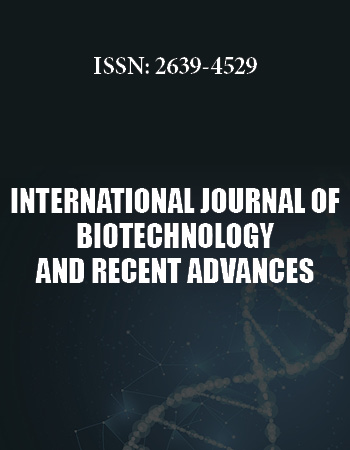International Biotechnology and Research Conference
April 25-27, 2018 Rome, Italy
Small Molecular Weight Peptides as Potential Therapeutics: Anticancer and Antimicrobial Effects of an Analogue to a Viral Protein
1Science Engineering and Health College, RMIT University, Australia
2Institute for Glycomics, Griffith University, Australia
The resonant recognition model (RRM) can be employed to de novo design small molecular weight peptide analogues to known anticancer proteins, like viral proteins, interleukins, and tumor necrosis factor (TNFα). The biological effects of RRM-MV, an 18 aabioactive peptide analogue to myxoma virus NM-T5protein (AAC55050, 483 aa), were investigated on mammalian cell cultures and selected bacterial pathogens using qualitative and quantitative cell survival methods. Human apoptosis protein arrays were used to detect the levels of pro-apoptotic and anti-apoptotic proteins in treated cancer cells versus non treated cells. The small molecular weight peptide (2.3 kDa) produced cytotoxic effects on cancer cell lines including mouse melanoma (B16), human melanoma (MM96L), squamous cell carcinoma (COLO16), prostate cancer (PC3) and breast cancer (MCF7). Yet, no cytotoxic effects were detected on human red blood cells, skin fibroblasts and other normal mammalian cell lines. Furthermore, RRM-MV exhibited a bacteriostatic effect on Gram positive bacteria such as Staphylococcus spp. Furthermore, in treated cancer cells and prior to necrosis stage, the peptide was located inside cytoplasmic components predicted to be glycoproteins, and it also expressed different levels of binding specificity to glycans like Sialy Lewis X, gangliosides and mannoses when glycan arrays were performed to evaluate the binding affinity of RRM-MV. The data from this study indicated that RRM designed peptides such as RRM-MV have a potential to be developed as effective therapeutics, mostly for their ability to penetrate cellular membranes, and to interfere with specific cellular biological functions.
Biography:
Dr. Istivan is a senior academic at RMIT University, Melbourne, Australia within the Biotechnology Discipline. Her research interests are in bacterial virulence, therapies and drug development. She was awarded a PhD in molecular microbiology in 2005 and has been affiliated with RMIT University as a researcher and a lecturer for 15 years. She has also supervised several PhD and Masters research projects within her research team and authored and coauthored research articles and book chapters in the fields of microbiology and novel therapeutics. She is currently the Biosciences senior program manager (Teaching and Learning) within the School of Science.


